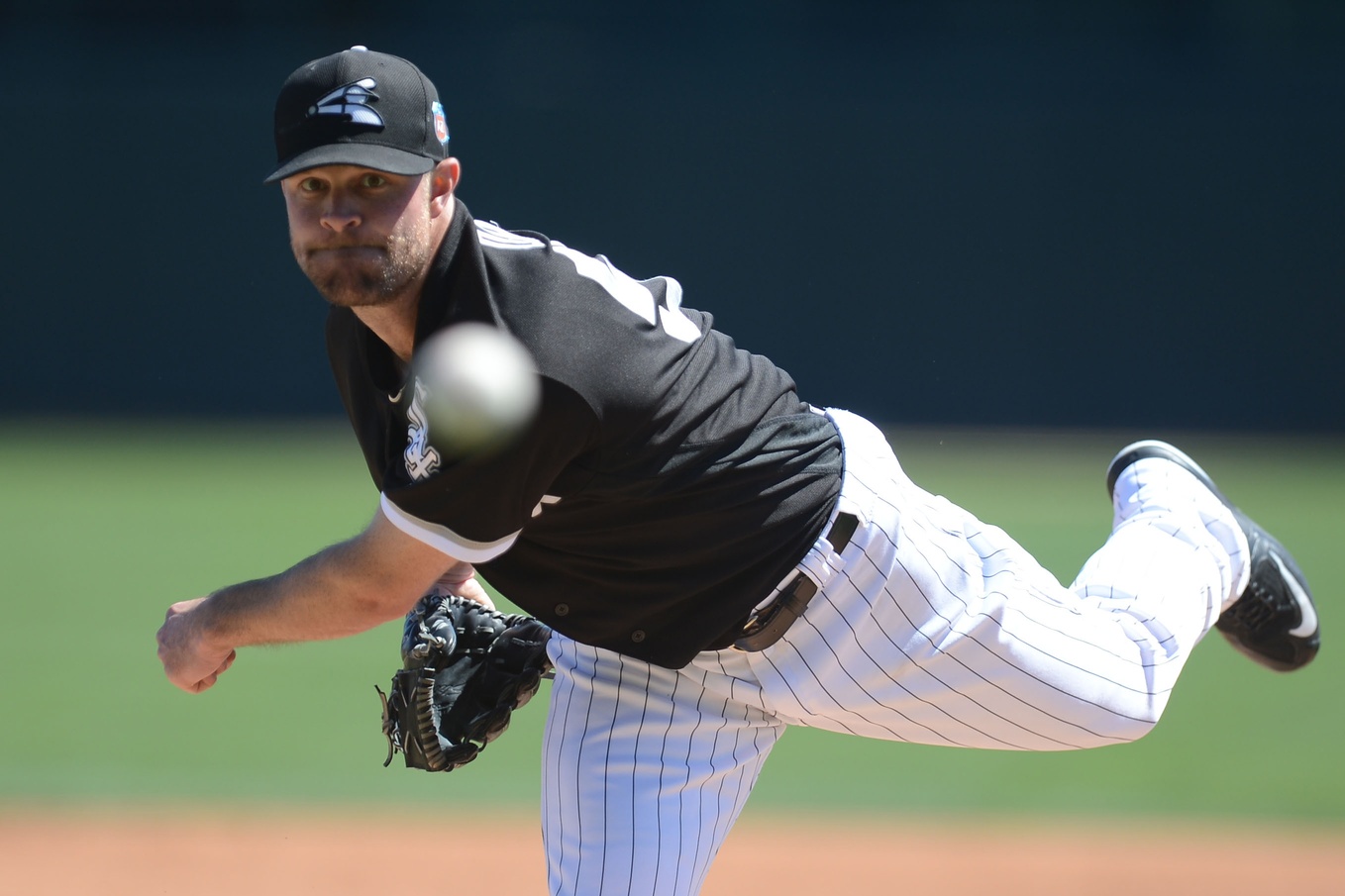We waited a day so now there should be enough things to actually comment on in the post-LaRoche chaos White Sox world.
1. John Danks‘ wave of mutilation continued Wednesday with six more shutout innings against the Padres, which now gives him 11-straight scoreless frames; a bizarre accomplishment for a No. 5 starter who can’t keep the ball down and is playing in a launching pad. How is it that Danks twirling shutouts and Jimmy Rollins clocking oppo-dingers existing in the same space?
Possibly unrelated, since Spring Training results only have tangential relation to reality, Bruce Levine reports that Dioner Navarro alerted Danks to a tell in his delivery, which he has since fixed.
“’Dioner has been around awhile,’ Danks said. ‘He has seen me and faced me. If he says something, I don’t need to look at it on video. He told me exactly what I was doing. We fixed it, and it has not been an issue since.’
Danks was holding his glove in different positions for grips on fastball and breaking balls, tipping his pitches to hitters, sources said.”
I would bet on Danks’ tell developing this Spring rather than carrying over from last season, but better to have a catcher noticing these things than not. Moreover, Navarro doesn’t project to be an asset as pure defender or as a pitch-framer, so some evidence of his experience providing value is a minor relief. Between Jeff Samardzija and Chris Sale, White Sox catching did not distinguish themselves for their observance in this area in 2015.
On top of that:
“Scout who saw John Danks said Weds. was best his fastball has consistently been in while. Velo often at 90, helps w/ changeup differential.”
It’s John Danks, so we should put a reasonable ceiling on the optimism, but here’s on back-end starter actively trending up for a change.
2. Tim Anderson was reassigned to minor league camp Thursday, ending his Spring session in regular Cactus League action that only saw him get 14 at-bats stuck behind Rollins and Tyler Saladino.
Anxiety that the Sox would be forced to break camp with Anderson pretty much died when Rollins came aboard, and transitioned to hope that Rollins would mentor and mold Anderson into his own image. The 22-year-old new father posted an .838 OPS in extremely limited exhibition action.
Anderson will almost certainly start the year in Triple-A Charlotte, while Rollins’ 37-year-old frame and Saladino’s shaky bat will be tasked with keeping him in the minors.
3. Friend of the blog Mauricio Rubio and the 2080 Baseball crew released their top-125 prospect list on Thursday, where Anderson came in at No. 24 overall–with notes that his future could very likely end up in center field–while Carson Fulmer came in No. 43.
2080 actually gave Fulmer a slightly higher OFP, but Anderson’s proximity to the majors, and baseline as an elite athlete and plus defender in the outfield (should he end up there) likely gives him a higher floor than Fulmer. I.e. Anderson’s floor (barring worst-case scenario disasters) is as an average center fielder, which is more valuable than Fulmer’s floor of being a solid reliever.
Spencer Adams didn’t make the list, but Rubio noted he was in consideration for the back end of the list and was dinged for command issues and inconsistent velocity reports.
4. Forbes franchise value estimates came out this week. They exist in a weird time zone for applying to the current state of the franchise because they reflect realities from a year ago, but it remains safe to say that the White Sox are in perfectly good financial straits, with an estimated franchise value of $975 million, (after being bought for $20 million 35 years ago) and a 10-year high of $31.9 million in operating income after Forbes pegged them for a small loss the year before (The 99-loss season).
On the whole, league is generating more revenue and profit than ever before, and player payroll is up 27% since 2011, even though the Sox Opening Day payroll crested in 2012 and has now fallen to essentially league average ($113 million).
5. Arizona is the site of the latest front in the battle between teams and municipalities about who is responsible for maintenance and upkeep of stadiums clearly built primarily for a private franchise. The Diamondbacks are threatening to try to get out of their lease with the 18-year-old Chase Field unless they can get the county to agree to take more responsibility for maintenance and repairs.
At this point it reads more as posturing for financial leverage than an imminent threat of a $354 million facility getting abandoned before its 20th birthday, but with the way the tide is slowly turning–in some hopeful cases at least–against municipalities bending over backwards to satiate the desire for sports franchises to minimize their costs, that posturing could just wind up in the Diamondbacks looking unreasonable and seeking to get Maricopa County to invest in their product because they refuse to do it themselves.
I love baseball, and society loves their sports, and the way we prioritize it in our lives is always going to a step removed from seeking a fair return on our financial investment, but there’s enough research out there by now for Maricopa County officials to know they are not getting back money they spend on Chase Field.
Lead Photo Credit: Joe Camporeale // USA Today Sports Images
